The How-to of Essential Oils: Learning the Basics of Aromatherapy
Aromatherapy is a science and art with many intricacies. However, don’t let this fact stop you from making the most out of it. In this article, all the aromatherapy questions you have that you were too afraid to ask have been answered. If you have a challenge or have questions about aromatherapy, feel free to ask the experts. This is the only sure way to find the right answers and make your aromatic experiences as fruitful as can be. These are the the how-to of essential oils: learning the basics of aromatherapy.
Here we go, 15 aromatherapy how-to questions answered!
How do you clean up spilled essential oils?
There are a few things you can do to clean up a spill of essential oils:
1. Use a paper towel or other absorbent material to blot up as much of the oil as possible.
2. Rinse the area with warm water and soap.
3. If the spill is on a hard surface, you can also use a solution of equal parts vinegar and water to help break down the oil and make it easier to clean up.
4. If the spill is on clothing, you may be able to remove the oil by using a solution of detergent and warm water. You may also need to use a pre-treatment product designed for removing stains.
5. Once you have removed as much of the oil as possible, you can then disinfect the area with a solution of 1 part bleach to 10 parts water.
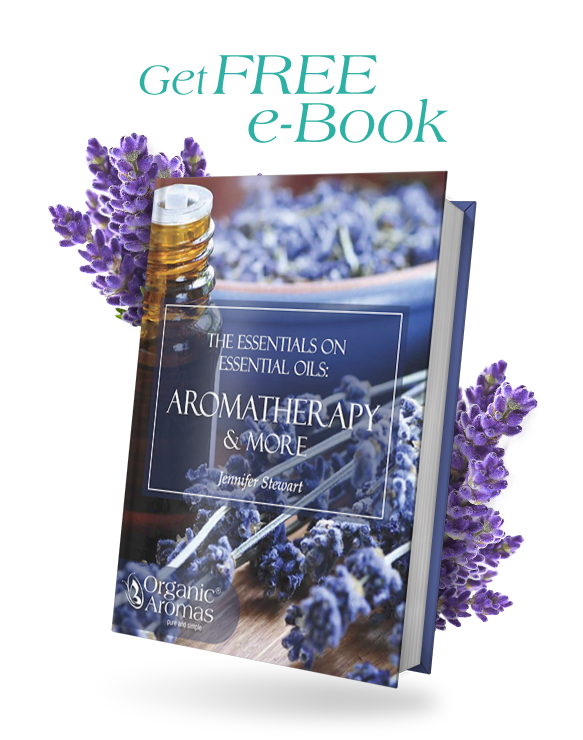
Sign Up to Get Your FREE
e-Book Here…
How do you find pure essential oils?
There are several things you can look for when trying to find pure essential oils. The first is to make sure the oil is from a reputable source. Many companies sell essential oils, but not all of them sell pure oils. You can often tell if an oil is pure by the price. Pure essential oils are typically more expensive than other types of oils because they are harder to produce.
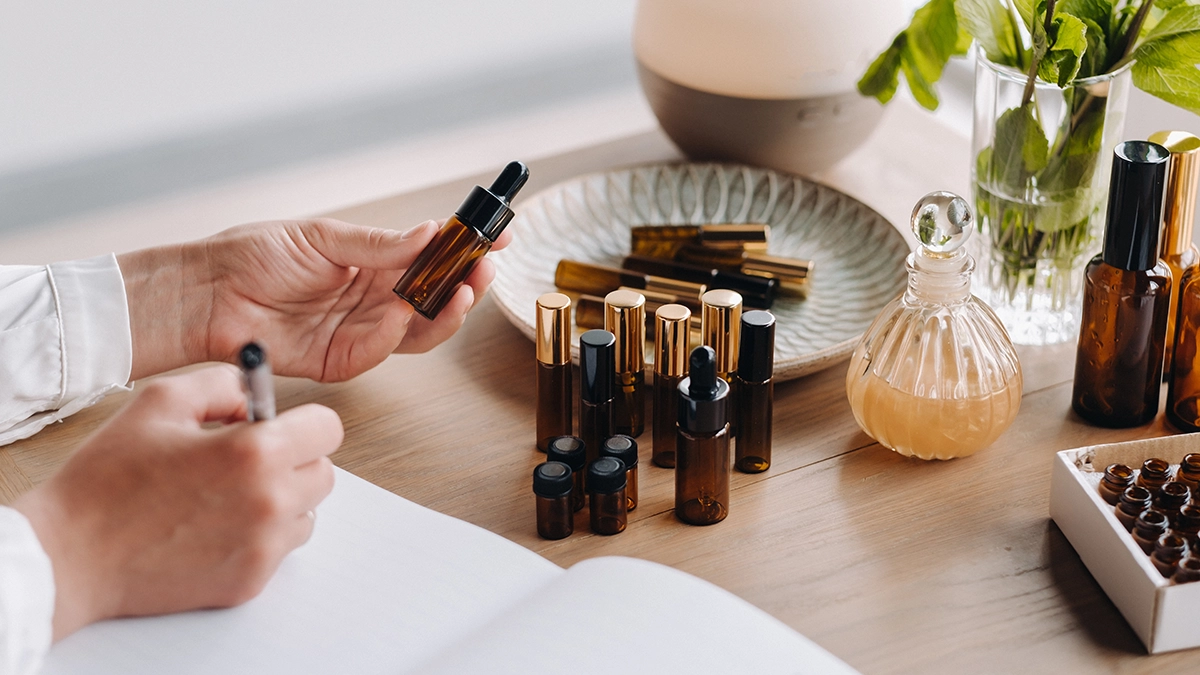
Another way to tell if an oil is pure is to look at the label. The label should list the ingredients and should say that the oil is 100% pure. If it does not say this, then it is likely that the oil has been diluted with other materials.
Thirdly, you can also ask someone who knows about essential oils to help you determine if an oil is pure. This is often the best way to find out for sure. Many experts can help you identify pure essential oils. You can find these experts by searching online or by asking at your local health food store.
Finally, you can look for those brands that make the customer the focus of their efforts. This means they are serious about safety. Some companies will proactively elect to submit their essentials to a third-party laboratory to determine both its’ purity, quality, and provenance. Using GCMS testing, which is quite expensive, a Company can show its customers that the essential oils they are buying are safe to use and good quality.
How do you dispose of essential oils?
Due to the corrosive nature of essential oils, it is both unethical and unsuitable to dispose of essentials into your sink. They may affect aquatic life or have other potentially negative impacts.
As you know, essential oils are natural products that have a wide range of uses. However, because they are oil-based, they can be difficult to dispose of properly. Here are some tips on how to safely and effectively dispose of essential oils:
1. Pour the oil into a sealable container such as a glass jar or plastic bottle.
2. Add an equal amount of water to the container.
3. Seal the container and shake it well to mix the oil and water.
4. Place the container in your garbage can with your regular trash.
5. Rinse out any remaining oil from the container with soapy water before recycling it.
By following these simple steps, you can safely and effectively dispose of essential oils.
How do you dissolve essential oils in water?
There are a few different ways to dissolve essential oils in water. One way is to add the essential oil to a carrier oil, like jojoba oil (or even a thimble full of milk), and then add this mixture to your bathwater. Another way is to add the essential oil directly to your bathwater but be sure to mix it well so that the oil doesn’t float on the surface of the water. Even though you cannot emulsify essential oils in water, they will eventually disperse throughout the water. Finally, you can make salt or sugar scrub with essential oils mixed in and then use this scrub in your bathwater. Whichever method you choose, be sure to enjoy your relaxing and rejuvenating aromatherapy bath!
How long do essential oils last?
This is a difficult question to answer because it depends on so many factors, such as the quality of the oil, how it was stored, and what type of oil it is. Generally speaking, however, most essential oils will last for at least a year, if not longer. Some of the more common oils, such as lavender and peppermint, may even last for several years. If you are unsure about how long your particular oil will last, it is best to consult with an expert or check the manufacturer’s guidelines.
That said, the essential oil industry general presumes a sealed essential oil can remain effective for three years.
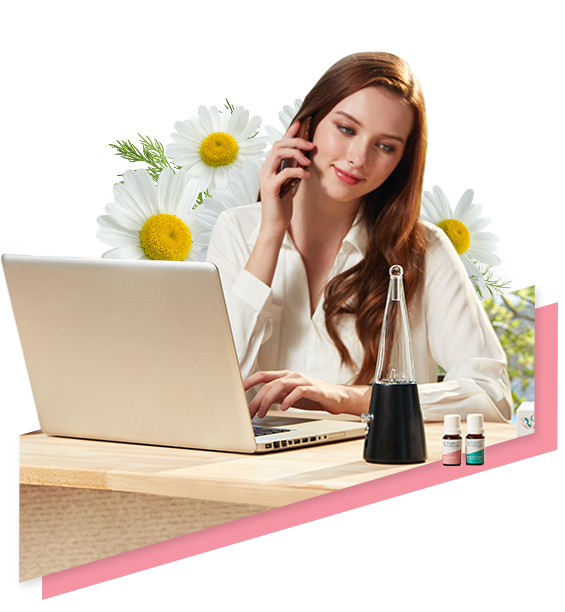
Join Our Exclusive Member Club to get Big Discounts!
How do you make your own essential oils at home?
To make your own essential oils at home, you will need a still, which is a device used to distill liquids. You can purchase a still online or at a home brewing store. Once you have your still, you will need to choose the right plants and flowers to extract the oil from. The most popular plants for making essential oils are lavender, rosemary, and peppermint.
To distill the oils, you will need to heat the still until it is hot enough to vaporize the liquid. This can be done by using a stovetop or an electric heating element. Once the still is hot enough, you will need to add the plant material and let it steep for several hours. After steeping, the essential oils will rise to the top of the still and can be collected. To extract essential oils this way needs some knowledge and equipment, but it is the most efficient method.
You can also make essential oils without a still by using the enfleurage or maceration methods. Enfleurage is a technique that uses fats to absorb the essential oils from the plant material. This method is very time-consuming and is not as effective as distillation. Maceration is a technique that uses solvents to extract the essential oils from the plant material. This method is less time-consuming than enfleurage, but it is also not as effective as distillation.
There are many ways to make your essential oils, but distillation is the most effective method. Once you have your still, you will need to choose the right plants and flowers to extract the oil from.
How do you dilute an essential oil with a carrier oil?
When you plan to apply essential oil to the skin you should start with the lowest dilution percentage possible. The following are mere guidelines considered to be common practice in the industry. To dilute an essential oil with a carrier oil to 3%, which is considered to be safe for an adult, you will need to use a ratio of 33:1, meaning for every one drop of essential oil, you add one to two teaspoons of carrier oil.
If you have sensitive skin or are using the oil on children, you may want to start with a 1% dilution (1 drop of essential oil per 100 drops of carrier oil). From there, you can increase the concentration as needed based on your tolerance level. Just remember that when using essential oils topically, it’s always best to err on the side of caution and use the lowest possible concentration that is effective for you.
The best carrier oils are ones that are lightweight and have little to no scent of their own, such as jojoba oil, grapeseed oil, or sweet almond oil. You can also use coconut oil, but keep in mind that it is a bit heavier and may clog pores if used in too high of a concentration.
Once you’ve chosen your carrier oil, simply add the desired amount of essential oil drops into the bottle of carrier oil. For example, if you’re making a 2% dilution, you would add 2 drops of essential oil for every 1 teaspoon (5 ml) of carrier oil. Shake well to combine the oils before using.
Now that you know how to dilute essential oils with a carrier oil, you can start experimenting with different oil combinations to create your own custom blends. Just remember to always keep the ratio of essential oil to carrier oil at an appropriate level, and to start with a low concentration until you know how your skin will react. Have fun creating!
How many drops of essential oils are there in an ml?
There are typically 20-25 drops of essential oils in 1 ml. This can vary depending on the viscosity of the oil and the size of the drop but is generally around this amount. Therefore, a teaspoon(5ml) can hold 80-100 drops. A tablespoon can hold 240-300 drops. There are 3 teaspoons in a tablespoon. It is best to use a glass dropper bottle when working with essential oils so that you can control the amount of oil being dispensed.
How do you organize essential oils?
There are a few different ways that people tend to organize their essential oils. Some people like to keep them all in one place, while others like to separate them into different categories.
One way to organize your essential oils is by their uses. For example, you could keep all of your oils that are good for relaxation in one place, and all of your oils that are good for energy in another place. This can be helpful if you know what you want to use your oil for before you even start looking for it.
Another way to organize your essential oils is by their properties. For example, you could keep all of your oils that are uplifting in one place, and all of your oils that are grounding in another place. This can be helpful if you’re not sure what you want to use your oil for, but you know what kind of effect you’re looking for.
Finally, you could also organize your essential oils by their scent. For example, you could keep all of your floral-scented oils in one place, and all of your citrus-scented oils in another place. This is helpful if you’re looking for a specific scent, or if you want to create a custom blend with multiple oils.
No matter how you choose to organize your essential oils, the most important thing is that they are easy to find and use when you need them.
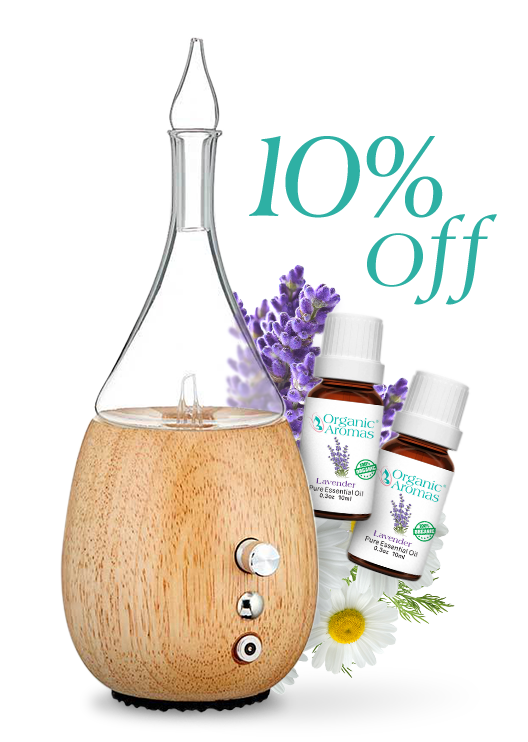
Join Now and Get a Coupon for 10% Off!
How do you make roll-on with essential oils?
There are a few different ways that you can make your own roll-on with essential oils. One popular method is to use a carrier oil, such as fractionated coconut oil or jojoba oil, and add a few drops of your chosen essential oil or blend. Another option is to use a pre-diluted roll-on bottle, which already has the carrier oil and essential oil combined. You can also purchase an empty roll-on bottle and mix your own ingredients together.
Once you have your desired ingredients, simply add them to the bottle and screw on the top. Be sure to label your bottle so you know what’s inside. To use, apply a small amount to the desired area and massage in until absorbed. You can reapply as needed throughout the day.
Making your own roll-on is a great way to save money and customize your scent. With so many different essential oils to choose from, the possibilities are endless! Give it a try today and see for yourself how easy and fun it can be.
Where are your pulse points for essential oils?

There are many ways to find your pulse points. You can either use your fingers to feel for them, or you can use a watch or other timepiece. To feel for your pulse points, simply place your fingers on the inside of your wrist and move them around until you feel a pulsing sensation. This is one of the most common pulse points. Other pulse points include the neck, temples, behind the ears, and the base of the throat. To find these pulse points, simply place your fingers on the skin and move them around until you feel a pulsing sensation. You may also want to try using a diluted essential oil on these areas to see the effect.
What is the best carrier oil for essential oils?
There are a variety of carrier oils available on the market, each with its own set of benefits. When it comes to choosing the best carrier oil for essential oils, it really depends on your individual needs and preferences. Some common carrier oils include jojoba oil, coconut oil, almond oil, grapeseed oil, and avocado oil. Each of these oils has different properties that make them more or less suitable for different uses.
For example, jojoba oil is very similar to the sebum produced by our skin, making it an excellent choice for people with sensitive skin or for those looking to use carrier oils in massage blends. Coconut oil is also a popular choice for massage therapists due to its nourishing and hydrating properties. Almond oil and grapeseed oil are both light and non-greasy, making them good choices for people who do not want their carrier oils to leave an oily residue.
Avocado oil is a bit heavier than the other oils listed here, but it is also very nourishing and can be a great choice for people with dry skin. Ultimately, the best carrier oil for essential oils is the one that works best for you and your individual needs. Experiment with different oils to see which ones you prefer.

How do you blend essential oils?
There are several ways to blend essential oils. The most common way is to mix them together in a bowl or container and then use a diffuser to disperse the mixture into the air. You can also add essential oils to lotions, creams, or other products that you apply to your skin. Finally, you can make your blends by combining different essential oils in a bottle or other container.
When blending essential oils, it is important to keep a few things in mind. First, you should always start with a small amount of each oil and then increase the amount of each oil until you find the perfect ratio for your needs. Second, you need to be careful not to overload your diffuser with too much oil, as this can cause it to stop working properly. Finally, you should always store your essential oil blends in a dark, cool place to prevent them from going bad.
If you follow these tips, you should be able to blend essential oils without any problems.
What essential oils smell good together?
Lavender and chamomile are two of the most popular essential oils for their calming and relaxing properties. When combined, these two oils can create a truly soothing and pleasant aroma.
Bergamot and peppermint are both uplifting and invigorating, making them a great combination for an energizing scent.
Lemon and rosemary are both refreshing and stimulating, making them a great pairing for a pick-me-up scent.
Cinnamon and clove are warming and spicy, making them a great combination for a cozy, wintery scent.
Pairing different essential oils together is a great way to create your unique blends with desired effects. Experiment with different combinations to find what you like best!
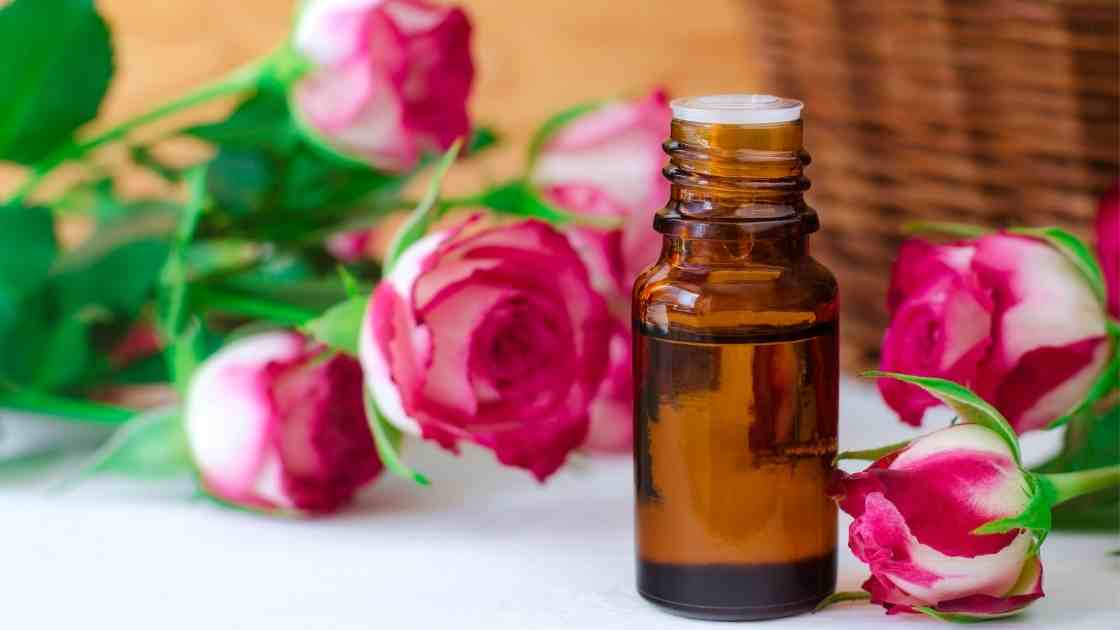
How long does it take for essential oils to wear off?
Essential oils are typically dried and concentrated plant extracts. The duration of their effects depends on how they are used. For instance, when inhaled, essential oils quickly enter the bloodstream and are metabolized by the liver. When applied to the skin, they are slowly absorbed and can remain active for several hours. Thus, essential oils can have a short- or long-lasting effect depending on how they are used.
Many factors can affect how long an essential oil will last once it has been applied. These include the concentration of the oil, the area of application, and individual body chemistry. However, most essential oils will last for several hours before needing to be reapplied.
Final Thoughts
There you have it! Top 15 aromatherapy questions and answers that will further enhance your experience. Aromatherapy is a learning process and there are more questions out there. We therefore invite you to leave your questions in the comments section below, and we will do our best to provide you with valuable answers. With so many scientific inventions and innovations, aromatherapy is dynamic, and you definitely need to keep abreast with the latest. Organic Aromas provides you with accurate resources on aromatherapy so that your wellness journey is made easier and effective. Remember, there are no silly questions, we are here to help.
Frequently Asked Questions (FAQs)
How can I clean up spilled essential oils?
Blot the oil with absorbent material, rinse with soap and water, and optionally clean hard surfaces with a vinegar-water solution.
What indicates the purity of essential oils?
Check for a reputable source, read labels for 100% purity, consult experts, or look for third-party testing like GCMS.
How should I dispose of old or unused essential oils?
Mix the oil with water in a sealed container and dispose of it with regular garbage to avoid environmental harm.
Can essential oils be mixed with water?
Oils don’t dissolve in water but can be dispersed with a carrier like jojoba oil or mixed in bathwater for aromatic baths.
What’s the shelf life of essential oils?
Typically, sealed essential oils can remain effective for up to three years, depending on storage and oil type.

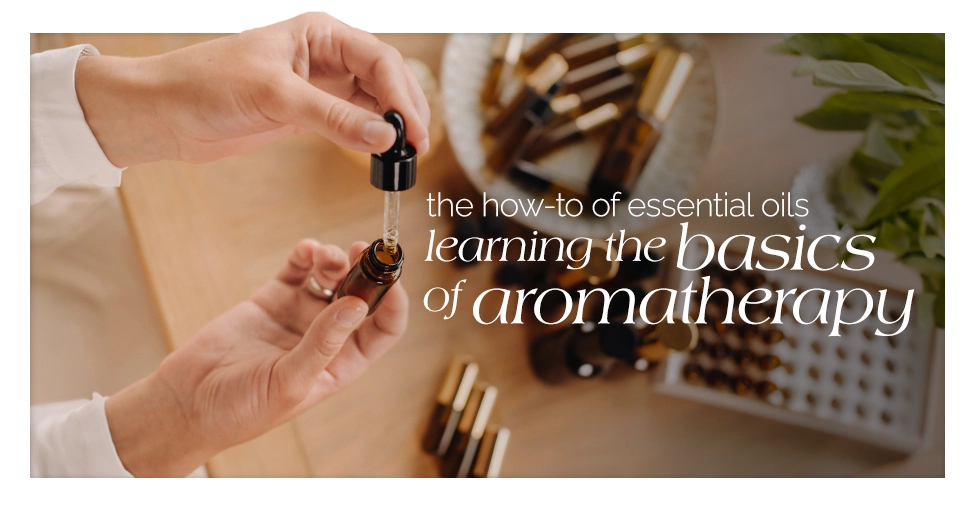
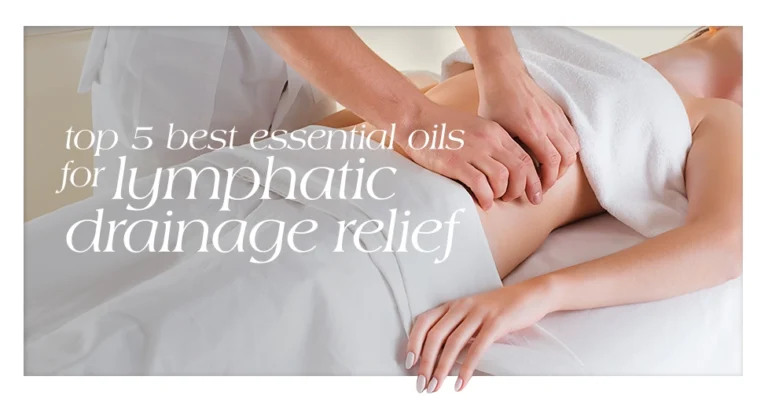
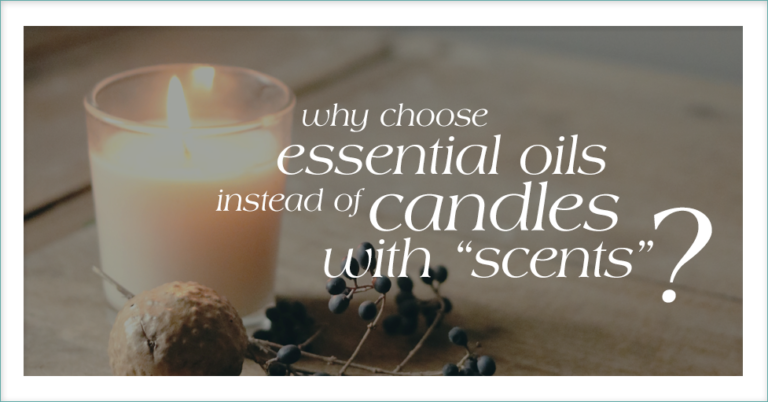


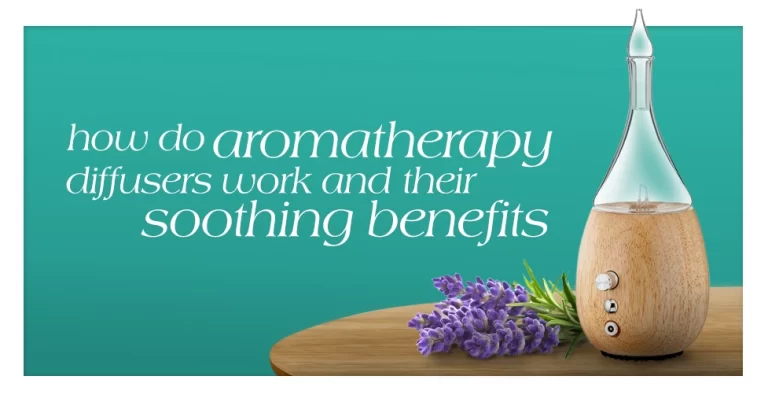

So interesting.
So much great info! I had no idea of the correct way to dispose of essential oils, and the recommendations for cleaning up essential oil spills are super helpful too.
This was a lot off good information
Thank you for sharing this
Thanks for this!
Thank you for all of this information
Lavender and chamomile are my favorites!
very informative!
I found the essential oils pairing section very interesting!
This is such a great informational blog on essential oils, as a newbie it was really helpful!
Interesting…
Thank you for all this information…especially the different pulse points!
A lot of very useful information here. Thanks for the article.
Awesome information!
thank you for the informative article
Honestly, I really appreciate the info on disposing of essential oils!
Really great information
Thanks for the tips. GOOD ARTICLE.
Great info!
Thank you for reminding people to not dispose of essential oils in the sink!
I am new at using oils thanks for all the info .
great products
I have never used oils so this is great info to read about them
So much great information! Thank you!
Anything with peppermint is my favorite!
Very interesting read.
benefit are amazing
So much to learn & benefit from.
This article was full of great introductory information. Thanks for explaining everything so well.
Informative!
This is a great introduction. I will refer back to this information
Great to be reminded of some of fundamentals of using essential oils; I usually rely on my wife who is much more knowledgeable about aromatherapy than me as she was a midwife who used oils to help her ladies.
Lots of useful information – thanks!
I never thought about blending oils together before but I can’t wait to try!! Thank you for the amazing tips!!
Love this article
Thank you for the helpful info. The lavender/chamomile is a great combination!
Thank you for all the important information! Much love!
Thanks so much for this blog! Very informative, definitely things I was needing to know. ❤️
Thanks for the info!
Awesome!
I need oils that can help my heart heal. Thanks for the great blog ideas.
Lots of great information. Thank you!
Awesome blog post! Thanks
Great blog post!
Some new things I didn’t know.
Thank you for the information.
Great information!
Informative information. I haven’t used essential oils get but I have been looking into it.
Thank you for sharing this– really great information! Can’t wait to try this!
😁😁😁👍👍👍. It is said knowledge is power..this article confirms it..
Very helpful article on essential oils, thanks.
I like “How do you make your own essential oils at home?” I am so going to try that one!
These are some great tips, finding the right one for you is the key.
Very informative, gracias
Very informative! I like it!
i have tried many ways to solve my insomnia problems and other health problems and i think that this one is the latest to try and i really hope that it will help me
interesting read, will do more research about it and use the result to improve my life
i liked the article, will use it for my daily life lifehack’s’
i enjoyed to read this article too. good to know that oils can do so many wonders
Nice, this guide was very through and easy to follow!
Thank you for educating me on aromatherapy. I believe that it will help me to relax.
I didn’t know anything about aromatherapy
I love these articles!
Very informative
Essential Oil
I like making custom toiletries and adding essential oils. Do you sell a kit with a selection of oils or do we buy them separately? Thanks.
It’s so important to know how to clean up essential oils because I need to repaint my chest of drawers due to a spillage!
This is excellent information. I have always wanted to use essential oils.
Very nice!
Thanks. Very well-conveyed info.
Very nice info
I need to learn so much about the essential oils!
I’ve never tried making my own roll on!
I also loved the post and will try some of your tips.
Cheers
niiiiiicee 😀
Nice info
Would like to try aromatherapy sometime.
I have always wondered how to dispose of the oils properly. Thank you for the steps!
I really appreciate the format of this info(Q&A). It answered a lot of my questions and cleared out some misinformations
i dont blend essential oils but i will give it a try
Thanks for the information, I love learning with you
Cool, will have to check this out!
I am very interested in making my own roll-on! 🙂
very interesting blog, got my attention will have to give it a try
great information for beginers
You really do have the absolute best information. Thank you so so much!
I love reading all your informational information, I seem to always learn something new each and every time – Thanks for your words of wisdom !!
Fascinating article.
These are all very helpful tips. Hopefully I’ll never have to use the spillage one.
Good information.
thanks for the info
Awesome share, didn’t know about carrier oils. Nice to learn about the basics.
Nice post
Lots of good ideas in this article.
Love this article
Bookmarking this!! I have so much to learn yet.
What is your favorite aroma?
Great blog article covering the basics about essential oils
Ok
There is so much that I did not know about essential oils!
Great and very informative! Thank you!
I love essential oils i mixed lavender plant in water with essential oil lavender as I heard its a knat deterrent. My children suffer badly when they are bitten
Lots of answers to things I would of never thought of ahead of time. Thanks for the help ahead of time.
Sounds amazing must try lots of good advice in this article
This article is very educationable about Aromatherapy
Nice article. I love essential oils.
I would like to try it.
thanks for the great info
Awesome to know, thank you!
I think I’d give this a try.
Thanks for the very informative tips. One thing that I am always trying to do, is to make sure the essential oils that I buy our own natural. I have pets at home, so I am very careful.
Thank you for all the information. Lots of education with essential oils.
What is the best for migraines? Keeping in mind scents are a big trigger.
I didn’t know about disposing of EOs. Thanks for the info.
This is such a wonderful article with lots of great information for beginners! Thank you!
This is such a great article for beginners like me!
Thanks for the tips i am new at this
I loved this post!
Full of awesome information!!
I had been intrigued by aromatherapy for a little while. Thanks for the article.